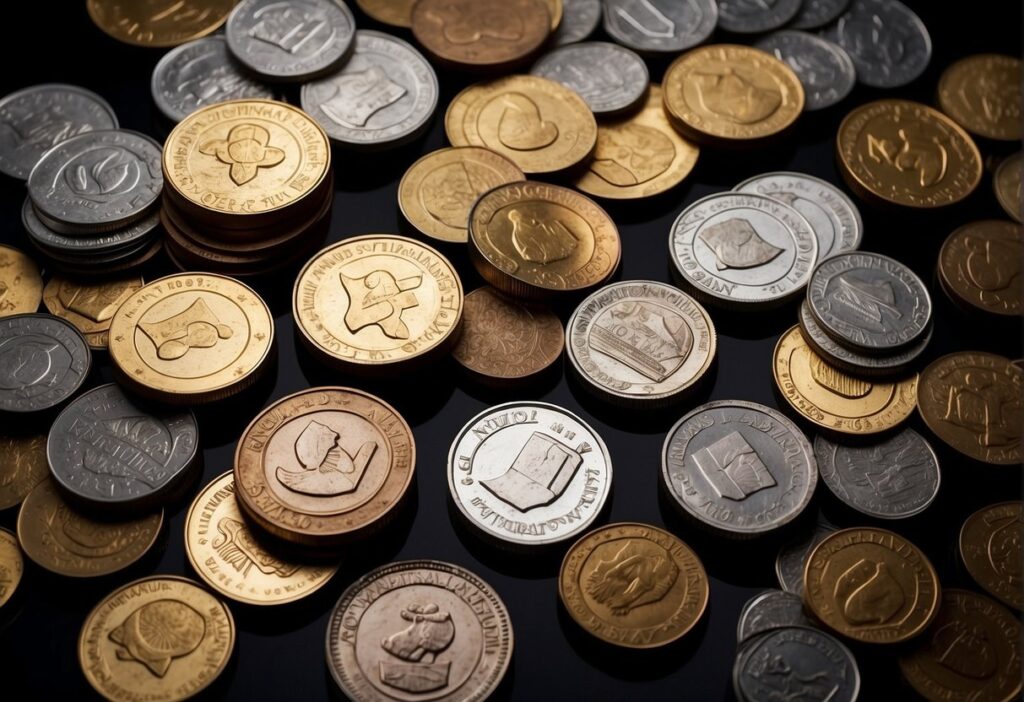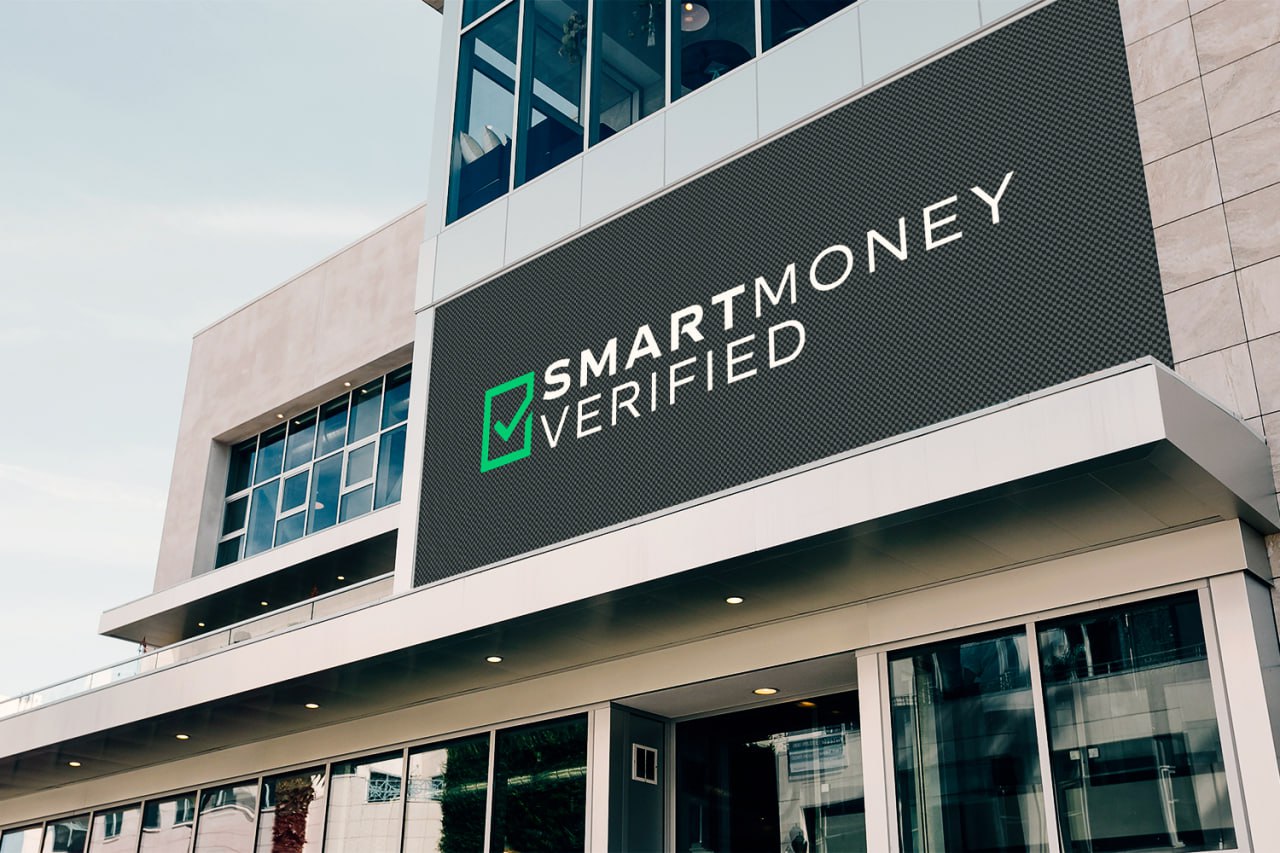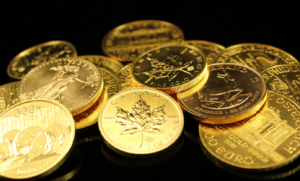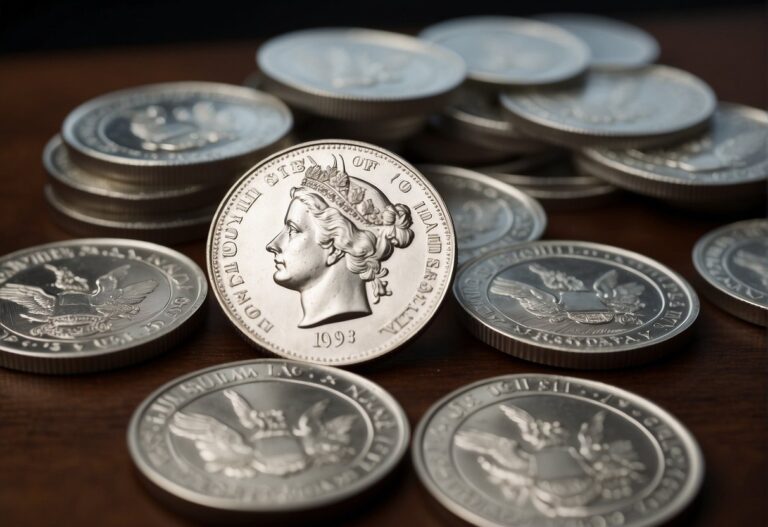A Silver IRA account is a type of self-directed individual retirement account specifically allowing the inclusion of silver and other precious metals as part of the retirement investment portfolio.
Unlike traditional or Roth IRAs, which typically hold stocks, bonds, or mutual funds, Silver IRAs allow investors to diversify their retirement assets by investing in physical silver.
This alternative investment vehicle is appealing to those looking to hedge against inflation and market volatility, as silver has intrinsic value and a history of being a stable investment during economic downturns.

Setting up a Silver IRA involves choosing a custodian specialized in precious metals and understanding the specific IRS regulations that apply to precious metal investments within an IRA, including the purity requirements and the approved forms of silver.
Investors should also be aware of the costs associated with Silver IRAs, including potential setup fees, storage fees, and insurance costs for the physical silver, as well as understand the tax implications of investing in precious metals through an IRA.
Silver IRA Account Key Takeaways
- Silver IRAs allow investment in physical silver as a method of diversifying retirement portfolios.
- Investors should work with specialized custodians and adhere to IRS regulations for precious metals in IRAs.
- Understanding associated costs, tax implications, and the importance of proper storage and insurance is crucial.
Understanding Silver IRA Accounts

Silver Individual Retirement Accounts (IRAs) provide a non-traditional investment opportunity for retirement planning. They allow investors the option to include precious metals, notably silver, as part of their retirement savings portfolio.
What Is a Silver IRA?
A Silver IRA is a type of self-directed individual retirement account that gives investors the ability to invest in actual silver bullion and other approved silver assets. It operates similarly to a traditional IRA or a Roth IRA, with the core difference being the investment in tangible precious metals rather than equities or bonds.
What are the Types of Silver IRAs
There are primarily two types of Silver IRAs: the Traditional Silver IRA and the Roth Silver IRA. Both accounts offer the unique benefit of including silver as an asset, but they differ in their tax treatment:
- Traditional Silver IRA: Contributions are typically pre-tax, meaning taxes are deferred until withdrawal.
- Roth Silver IRA: Contributions are made with after-tax dollars, offering tax-free growth and tax-free withdrawals in retirement, provided certain conditions are met.
Investors can choose according to their current financial situation and anticipated tax bracket during retirement.
The Benefits of Investing in a Silver IRA

Investing in silver within a self-directed Individual Retirement Account (IRA) can offer unique advantages such as enhancing portfolio diversification and serving as a hedge against inflation. These benefits may contribute to the long-term growth potential of an individual’s retirement savings.
Diversification of Retirement Portfolio
Diversifying one’s retirement portfolio is crucial in managing risk and reducing the potential impact of market volatility. By adding silver, a precious metal, investors can balance their holdings and potentially mitigate the risks associated with a portfolio concentrated in stocks and bonds.
Silver’s historical performance tends to be uncorrelated with traditional asset classes, making it an effective tool to diversify.
Silver IRA as a Hedge Against Inflation
Silver has been recognized as a hedge against inflation, maintaining its purchasing power over time. Precious metals like silver often retain their value or even appreciate when inflation reduces the value of paper currency. This aspect makes silver a compelling choice for preserving wealth as it can protect an investment portfolio against the erosive effects of inflation.
Silver IRAs Potential for Growth
While silver, like any investment, involves risk, it also offers growth potential. The demand for silver spans industrial applications, jewelry, and as an investment in itself. This multifaceted utility can lead to a rise in price under the right economic conditions, making it a vehicle with the potential to contribute positively to an investment portfolio’s overall performance.
However, it’s important to note that markets can be unpredictable, and past performance does not indicate future results.
Silver’s role as a safe-haven asset during economic uncertainty further bolsters its growth potential. When other assets experience downturns, silver may see an increase in investor interest, highlighting its dual nature as both an industrial commodity and a precious metal investment.
Silver IRA Eligibility and Regulations

Investors seeking a self-directed IRA to include silver assets must comply with specific IRS eligibility requirements and regulations. Understanding these guidelines ensures the proper inclusion of silver in an investment retirement account.
Silver IRA IRS Eligibility Requirements
The IRS permits certain types of precious metals, including silver, to be held in a self-directed IRA. Investors must adhere to the following criteria to include silver in their IRA:
- Account Type: The IRA must be self-directed, allowing the account holder to make investment decisions on behalf of the retirement plan.
- Custodian: Only an IRS-approved custodian can handle the precious metals in the IRA. These custodians ensure the metals are securely stored and transactions follow tax law.
IRS-Approved Silver
When it comes to the silver itself, not just any silver coin or bar can be included in a Silver IRA. The IRS has stringent regulations on the purity and type of silver allowed:
- Purity Standards: Silver must meet a fineness standard of at least 99.9% purity.
- Approved Forms: Approved forms of silver include American Silver Eagle coins and other IRS-approved silver coins and bars.
- Minting: Both domestic and certain foreign mints are permissible, provided they meet IRS standards for fineness.
Investors interested in a Silver IRA should always verify the silver meets these requirements to avoid potential taxation issues or penalties.
Setting Up a Silver IRA

Establishing a Silver IRA involves selecting a qualified custodian to manage the account and determining how to fund the IRA, whether through a transfer, rollover, or other funding options.
Choosing a Silver IRA Custodian
Selecting a custodian for a Silver IRA is crucial because they are responsible for ensuring that the Self-Directed IRA complies with Internal Revenue Service (IRS) regulations. A custodian typically is a bank, trust company, or other entity approved by the IRS to hold IRA assets on behalf of the IRA owner.
Individuals may choose between a Traditional IRA or Roth IRA structure for their Silver IRA, depending on their specific circumstances and retirement goals.
It is important to carefully research and compare custodians, taking into consideration factors such as reputation, fees, and the level of customer service provided.
Silver IRA Funding Options
Funding a Silver IRA can be achieved through various methods, such as a transfer of funds from an existing IRA or a rollover from a qualified retirement plan, such as a 401(k).
A transfer is typically a non-reportable movement of assets between IRAs of the same type, while a rollover may involve moving funds from a different type of retirement account into the IRA, and could be reportable to the IRS.
It is vital to understand the regulations regarding rollovers and transfers to avoid potential taxes or penalties. Direct contributions to the Silver IRA are another funding option, subject to annual contribution limits set by the IRS.
Silver IRA Contributions and Limits

Navigating the terrain of Silver Individual Retirement Accounts (IRA) involves understanding specific guidelines and limitations regarding contributions. This ensures compliance with tax laws while maximizing retirement savings potential.
Silver IRA Contribution Guidelines
Individuals must have earned taxable income to contribute to a Silver IRA, which can either be a Traditional IRA or a Roth IRA. Contributions to Traditional IRAs may be tax deductible, depending on income levels and participation in employer-sponsored retirement plans.
For Roth IRAs, contributions are made with after-tax dollars.
Annual Contribution Limits
The contribution limits for Silver IRAs align with those of Traditional and Roth IRAs. For 2023, individuals are allowed to contribute up to $6,500 if they are under 50. For those aged 50 and over, an additional “catch-up” contribution of $1,000 is permissible, bringing the total to $7,500. These limits are subject to annual adjustments for inflation.
| Age | Contribution Limit for 2023 |
|---|---|
| Under 50 | $6,500 |
| 50 or Older | $7,500 |
Potential contributors must note that these amounts represent total contributions across all IRA accounts and are not per account limits.
It is crucial to heed these limits to avoid tax penalties and maximize the growth potential of one’s retirement savings.
Silver IRA Storage and Insurance

Investing in a silver Individual Retirement Account (IRA) necessitates specific storage and insurance protocols to ensure the safety and legitimacy of the physical assets. The Internal Revenue Service (IRS) has set forth stringent guidelines for the storage and protection of precious metals within an IRA.
Approved Storage Facilities
Silver IRAs are required to store their physical assets in IRS-approved depositories. These facilities ensure secure storage and are equipped with advanced safety measures to protect the investment.
They must meet federal standards for security and are typically characterized by high-tech surveillance, timed locks, and strict access controls.
Storage fees are charged by these depositories and may vary based on the amount and value of the silver stored. These fees are an essential consideration for investors as they can affect the overall return on investment.
Insurance for Silver IRAs
Insurance is a critical aspect of a silver IRA as it provides additional security for the precious metals, which are often considered a safe-haven asset. The insurance covers risks like theft, damage, and loss. Insurance costs should be factored into the investment strategy, as they can impact the profitability of the IRA.
It is typically provided by the depository or through a third-party provider, ensuring that investors’ assets are safeguarded against unforeseen events.
The Costs of a Silver IRA

When investing in a silver IRA, potential investors should be aware that there are specific costs associated with maintaining the account. Two primary fees include custodian fees and storage fees, which are essential for the security and compliance of the precious metals within the IRA.
Custodian Fees
Custodians are essential for a silver IRA as they provide the legal oversight required for managing the retirement account. Investors should expect to pay an annual custodian fee which can vary widely based on the provider. This fee typically covers account administration, transaction processing, and required record-keeping.
Insurance costs may also be part of the custodian fee structure, offering an added layer of protection for the investor’s assets. Competitive pricing varies, with some custodians charging a flat rate, while others may base their fees on the account value.
Storage Fees
Securing physical silver requires safe storage, which incurs annual storage fees. These fees are charged for the secure storage of physical precious metals at a depository. Storage fees can be a flat rate or scaled based on the quantity of silver being stored.
Some storage facilities offer segregated storage options at a higher cost, which ensures that an investor’s silver is physically separate from others’ assets. Investors should consider these fees carefully as they can impact overall portfolio returns.
Risks and Considerations

Investing in a Silver IRA comes with its own set of risks and considerations that potential investors need to understand. These include the influence of market volatility on silver prices and how a Silver IRA compares with other types of investments in crafting a diversified investment portfolio.
Market Volatility and Silver Prices
The price of silver can be highly volatile, and susceptible to rapid and unpredictable fluctuations due to various factors, including economic volatility and changes in industrial demand. Investors should recognize that the price of silver can swing significantly over a short period, impacting the value of a Silver IRA. These price fluctuations can be a double-edged sword; they might provide opportunities for gain, but they also pose a risk of substantial loss.
Silver IRA vs Other Investments
When comparing a Silver IRA to other investment vehicles, such as stocks, bonds, or mutual funds, investors should consider the diversification benefits alongside the inherent risks.
While precious metals like silver can offer a hedge against inflation and currency devaluation, they do not generate interest or dividends, unlike some bonds and mutual funds in an investment portfolio.
- Stocks: can offer dividends and the potential for capital appreciation, but they are also prone to market volatility.
- Bonds: typically provide fixed income and are considered lower risk, but returns can be modest.
- Mutual Funds: pool money with other investors to purchase a diversified mix of stocks, bonds, or other assets, and tend to offer diversification within a single investment.
Investors need to weigh the stability of traditional investments against the potential for silver to diversify and protect against specific economic uncertainties.
Silver IRA Tax Implications

When considering a Silver IRA, it’s crucial to understand the tax implications involved. These come into play both during the accumulation of retirement savings and at the point of withdrawal.
Tax-Deferred vs Tax-Free Accounts
Tax-deferred accounts, like a traditional Silver IRA or a 401(k), allow investors to make contributions that reduce their taxable income for the year those contributions are made. The money within these accounts then grows tax-deferred, meaning taxes on capital gains, dividends, and interest are postponed until funds are withdrawn.
On the other hand, tax-free accounts, such as a Roth Silver IRA, involve contributions with post-tax dollars, but offer tax-free growth, meaning no taxes owed upon withdrawal, provided certain conditions are met.
Understanding Silver IRA Withdrawals and Penalties
Withdrawals from tax-deferred accounts are taxed as ordinary income at the individual’s current tax rate during retirement. If these withdrawals happen before age 59½, they are typically subject to a 10% early withdrawal penalty. This rule is put in place to discourage the use of these funds for purposes other than retirement.
With a Roth Silver IRA, withdrawals can be made tax-free, as the contributions have already been taxed. However, early withdrawals from the earnings part may still incur penalties and taxes if made before the account is five years old or the account holder is under 59½ years of age.
Tax-deductible contributions to a traditional IRA can lower a person’s taxable income, providing immediate tax advantages. However, all withdrawals during retirement are added back into taxable income. The strategic timing of contributions and withdrawals can have a considerable impact on an individual’s tax situation.
Choosing a Silver IRA Provider

When opting for a Silver IRA, an investor should prioritize selecting a provider that brings reliability and regulatory compliance to the forefront. This choice impacts the security and performance of their retirement investment in precious metals.
Reputable Precious Metals Dealers
It is crucial to engage with a reputable precious metals IRA company for a Silver IRA. Investors should look for dealers with a track record of ethical practices, positive customer feedback, and an established presence in the market. Licensed dealers who have affiliations with industry bodies provide an additional layer of trust and credibility.
An investor can start by checking whether a dealer is a member of well-known metals industry associations or has received accreditation from respected institutions.
Financial Regulatory Compliance
The chosen Silver IRA provider must comply with all relevant financial regulations. A custodian who is regulated by the Securities and Exchange Commission (SEC) and the Financial Industry Regulatory Authority (FINRA) ensures adherence to stringent financial standards and investor protections.
Prospective clients should verify that the custodian is licensed and in good standing with these regulatory bodies. Additionally, consulting with a financial advisor who understands the intricacies of precious metals investing can help ensure that the selections made align with both regulation and personal retirement objectives.
Transferring or Rollover to a Silver IRA

Individuals seeking to diversify their retirement investments may consider transferring current retirement funds into a Silver Individual Retirement Account (IRA). This involves either transferring an existing IRA or rolling over funds from other qualified retirement plans into a Silver IRA, which is designed to hold physical silver and other approved precious metals.
IRA Transfer Process
Transferring assets to a Silver IRA is typically a straightforward process. The account holder will initiate a direct transfer through the IRA custodian, who manages both the existing and new precious metals IRA accounts. The transfer is executed without the owner taking possession of the funds, which helps maintain the tax-deferred status of the investment.
- Steps to Transfer:
- Choose a custodian that specializes in Silver IRAs.
- Complete the required paperwork to facilitate the transfer.
- The custodian will directly transfer the funds to the new Silver IRA.
Silver IRA Rollover Options and Rules
Rollover is an alternative to transferring and involves funds being paid directly to the individual, who then deposits them into the Silver IRA. There are specific guidelines governing rollovers:
- 60-Day Rule: The individual has 60 days to deposit funds into a Silver IRA to avoid taxes and potential penalties.
- One-Year Limit: Only one rollover is permitted per 12-month period from any retirement account to another.
When rolling over funds from existing retirement accounts like a 401(k), it is crucial to ensure that the rollover is done correctly to prevent any unintended tax consequences.
If a rollover is incorrectly managed, it could lead to taxable events, so consulting with a financial advisor experienced in retirement account conversions and the specific rules regarding precious metals could be beneficial.
Silver IRA Frequently Asked Questions

In this section, you’ll find concise answers to common queries regarding Silver IRA accounts, from operation basics to withdrawals and benefits.
How can one make withdrawals from a Silver IRA account?
Withdrawals from a silver IRA follow the same rules as traditional IRAs, where investors can start making penalty-free distributions at age 59½. The holdings in precious metals have to be sold for cash before withdrawal.
How Does a Silver IRA Work?
A silver IRA operates as a self-directed individual retirement account, allowing investors to hold silver bullion or coins. It functions under IRS guidelines with specific requirements for storage and custodianship of precious metals.
What is the latest trend in silver prices affecting my IRA investment?
Investors should monitor the latest trend in silver prices to understand how market fluctuations can impact their IRA portfolio’s value. Silver’s history as a hedge against inflation makes it a notable choice for diversification.
What is the process for opening a new Silver IRA account?
To open a new silver IRA account, an investor selects a custodian, completes the application process, funds the account, and then chooses the form of silver (coins or bullion) to include in their IRA.
What are the benefits of including silver in an IRA portfolio?
Including silver in an IRA portfolio offers diversification, potential protection against inflation, and the possibility of capital appreciation. Investors can add silver to hedge against other assets that might be more volatile.
How can an existing IRA be converted to a Silver IRA Account?
An existing IRA can be converted to include silver by executing a rollover or transfer. This involves selecting a self-directed IRA custodian who deals with precious metals and arranging for the movement of funds or assets from the current retirement account.




